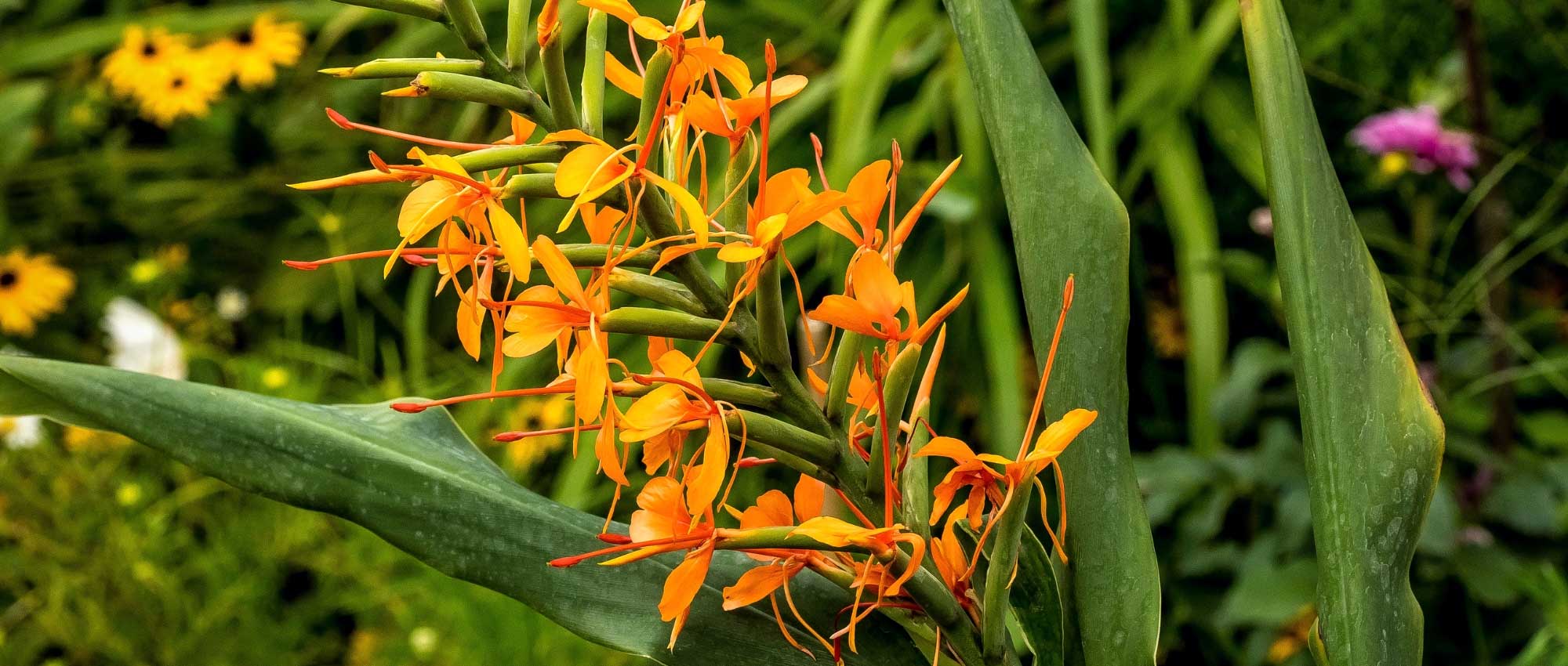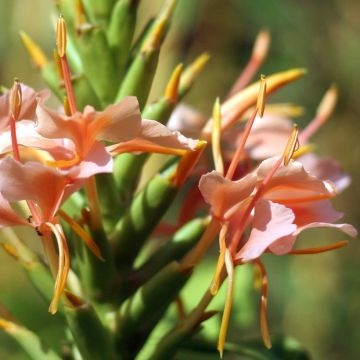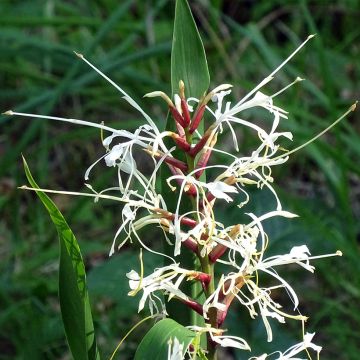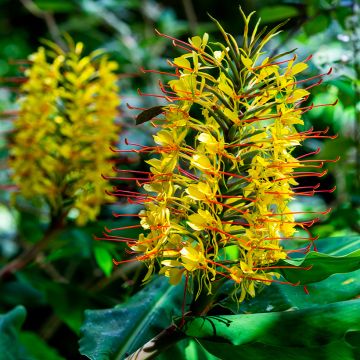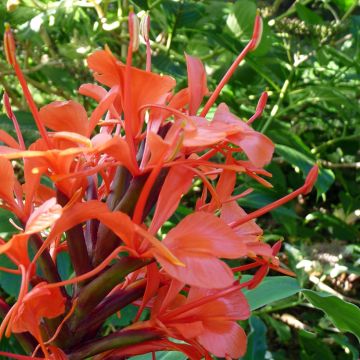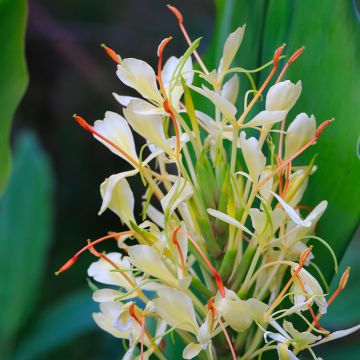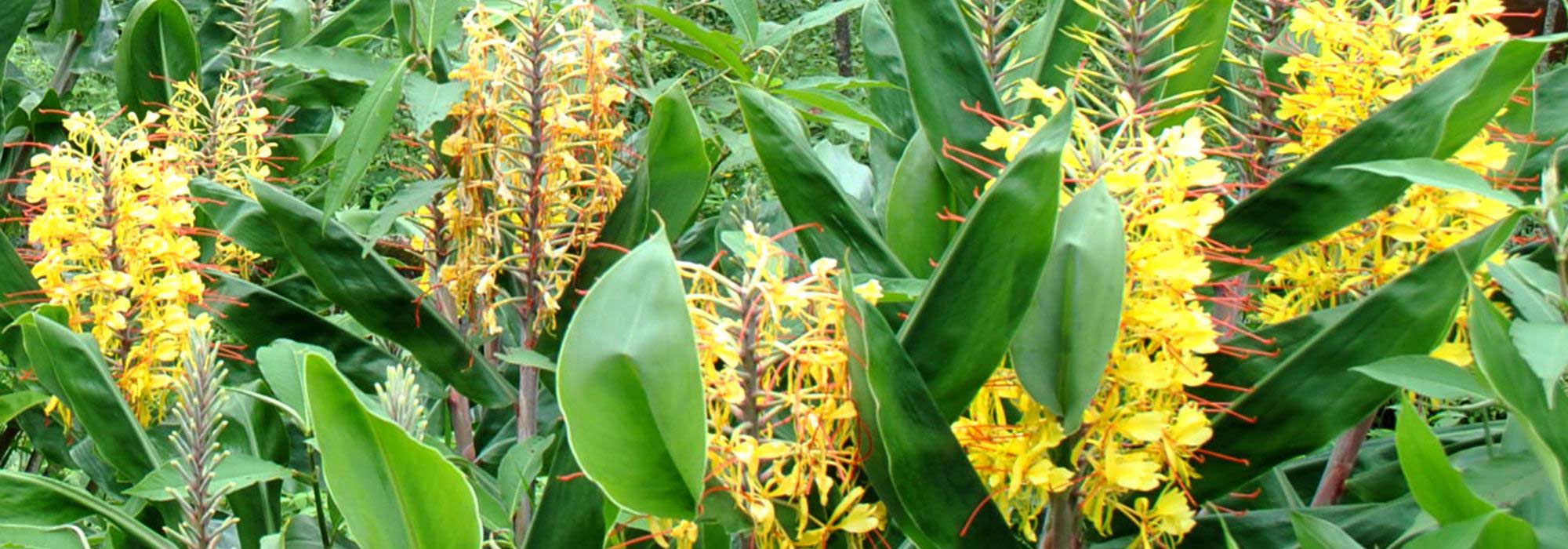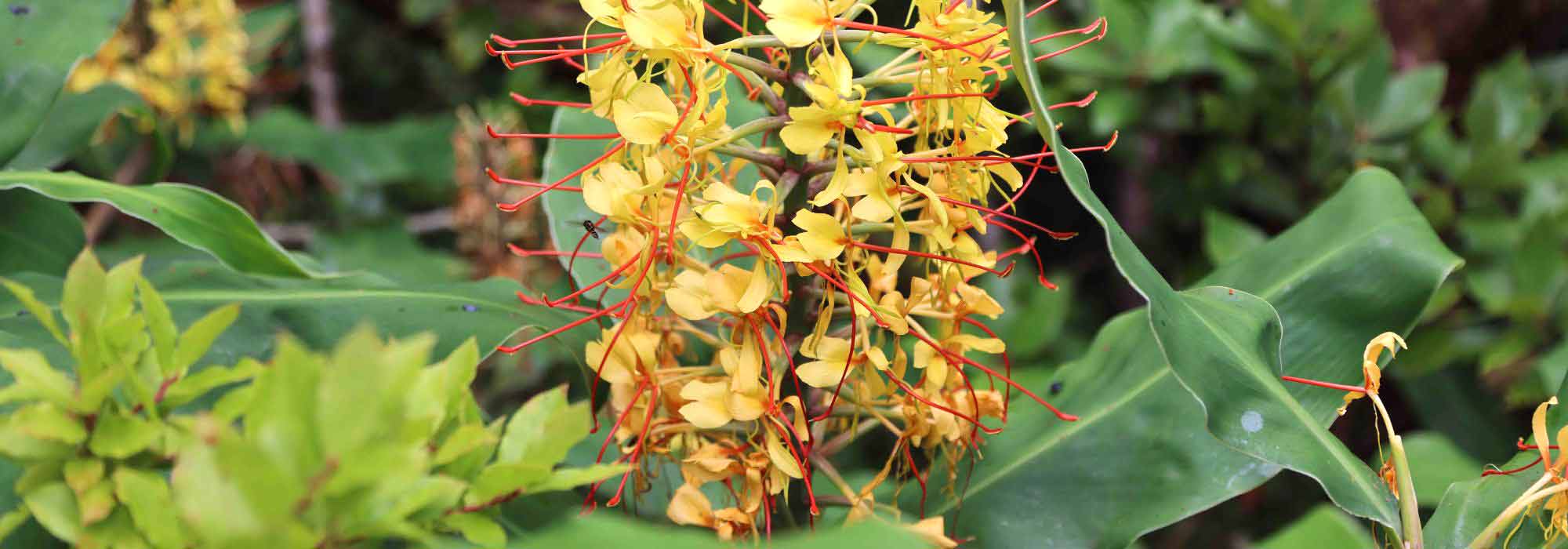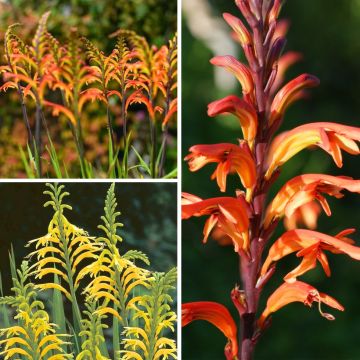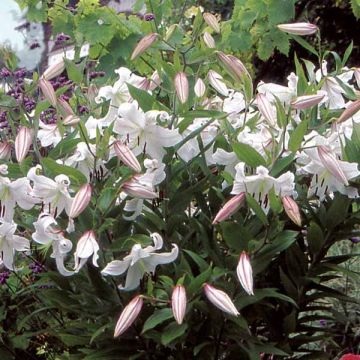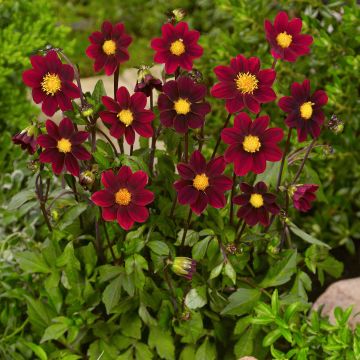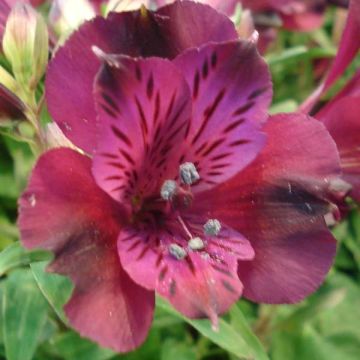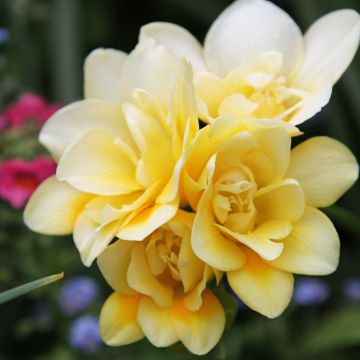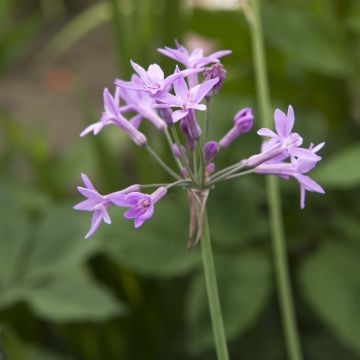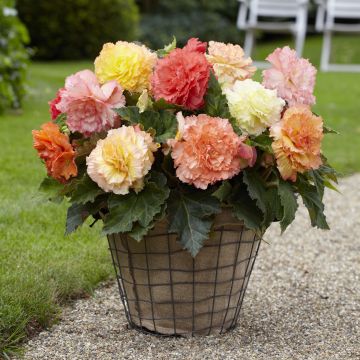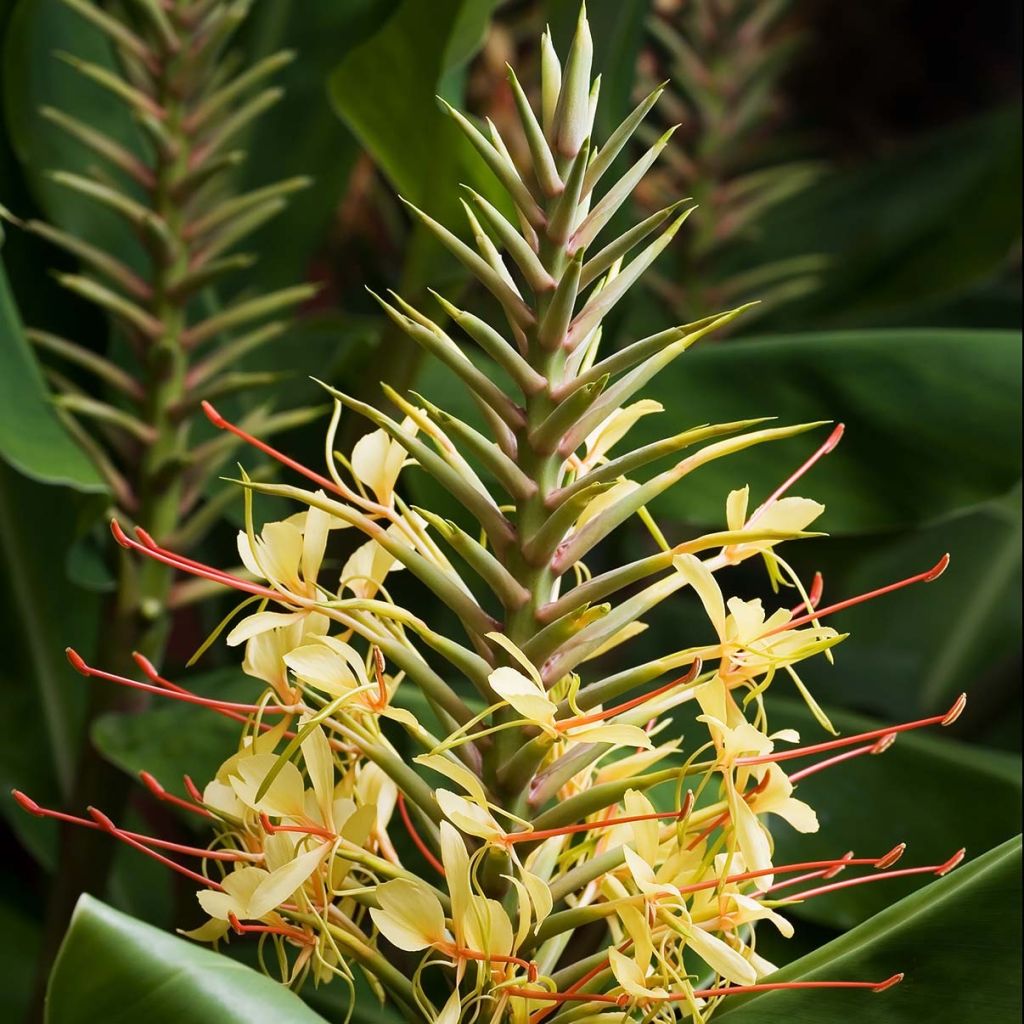

Hedychium gardnerianum - Ginger Lily
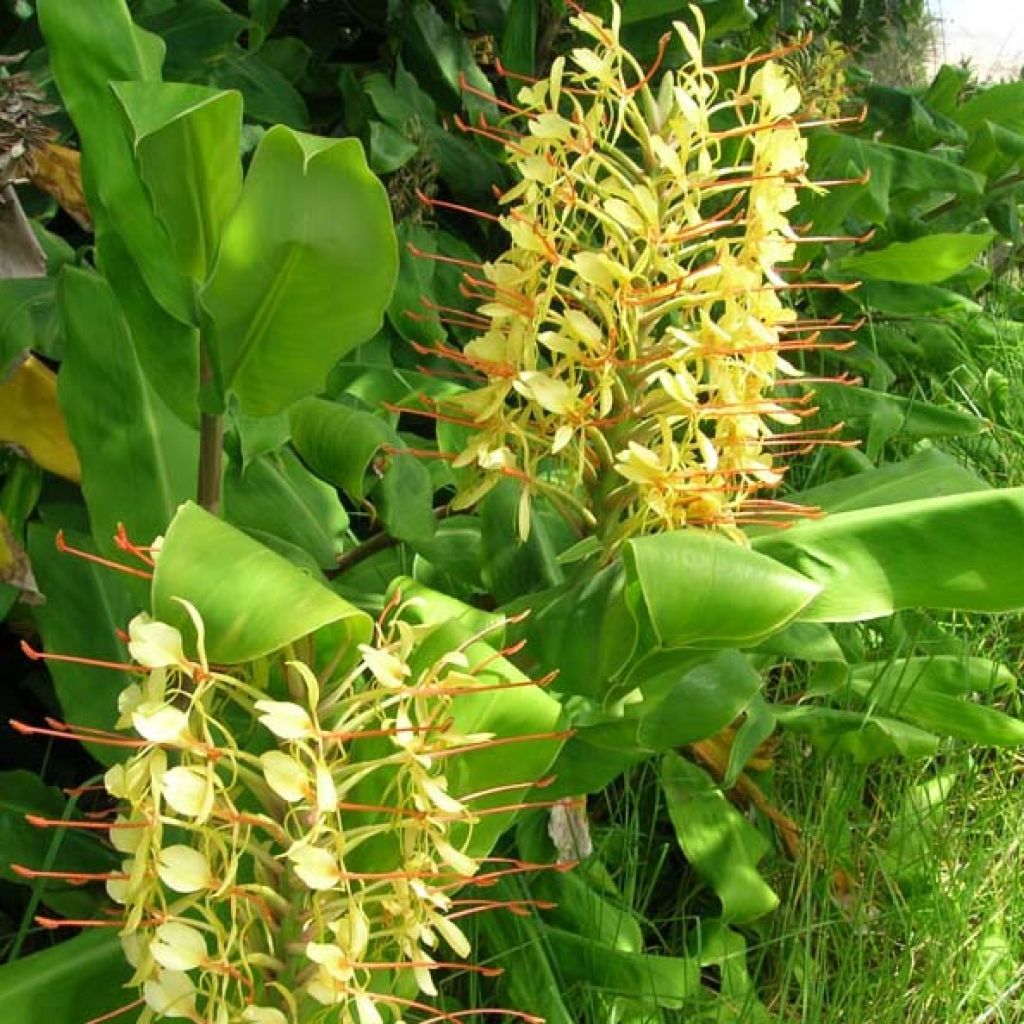

Hedychium gardnerianum - Ginger Lily
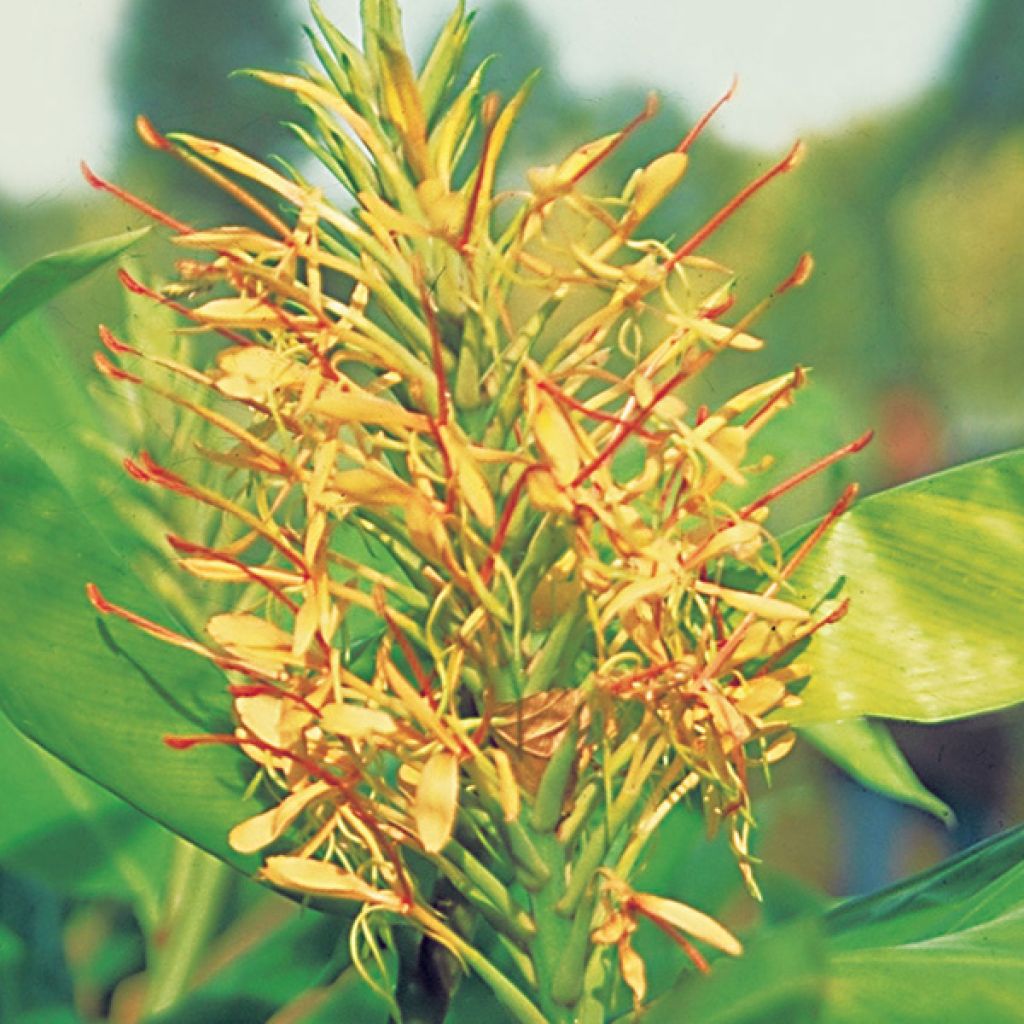

Hedychium gardnerianum - Ginger Lily
Hedychium gardnerianum - Ginger Lily
Hedychium gardnerianum
Kahili ginger, Kahili garland-lily, ginger lily
None of the bulbs received have taken, one planted in the ground and the other in a pot. No germination observed.
Patrice, 06/11/2024
Special offer!
Receive a €20 voucher for any order over €90 (excluding delivery costs, credit notes, and plastic-free options)!
1- Add your favorite plants to your cart.
2- Once you have reached €90, confirm your order (you can even choose the delivery date!).
3- As soon as your order is shipped, you will receive an email containing your voucher code, valid for 3 months (90 days).
Your voucher is unique and can only be used once, for any order with a minimum value of €20, excluding delivery costs.
Can be combined with other current offers, non-divisible and non-refundable.
Home or relay delivery (depending on size and destination)
Schedule delivery date,
and select date in basket
This plant carries a 6 months recovery warranty
More information
We guarantee the quality of our plants for a full growing cycle, and will replace at our expense any plant that fails to recover under normal climatic and planting conditions.

Would this plant suit my garden?
Set up your Plantfit profile →
Description
The Hedychium gardnerianum, sometimes called longose or Kahili ginger, is undoubtedly the most widely cultivated ornamental ginger in the world, far beyond its native Himalayas. This lush rhizomatous species seduces amateur gardeners with its beautiful, exuberant foliage and superbly fragrant flowering in late summer, in the form of long upright floral spikes, in a column of pale yellow spider-like flowers, sometimes orange, enhanced by long bright red stamens. A very beautiful plant for the terrace or the edge of a water point in mild climates.
The Hedychium gardnerianum, native to Nepal, the Himalayas, and Bhutan, naturally grows in marshy areas, under mild or tropical temperate climates. It belongs to the Zingiberaceae family. It is a somewhat hardy species, deciduous in winter, tolerating brief periods of frost, down to -7°C (19.4°F). At maturity, this plant with thick and tough rhizome, with rather slow growth, will form an elongated tuft, 1.50m (5ft) high and 80-90cm (32-35in) wide in our climates (or grown in a pot). It consists of leafy canes whose lanceolate, green to dark green leaves, alternate, are wide, full, and sheathing. Flowering takes place in August-September in mild climates, in autumn elsewhere. The very long-lasting inflorescence, which can measure up to 15cm (6in) in length, is composed of numerous small, pleasantly fragrant, soft yellow to orange flowers, somewhat resembling those of gauras with their compound structure of small petals surrounding prominent, 7cm (3in) long bright red stamens. They attract many bees. The plant disappears in autumn but regrows from the stump in spring.
The Hedychium gardnerianum is considered, in Hawaii, as an invasive evergreen plant, the equivalent of Buddleja that colonises wastelands in our region. In most of Europe there is little risk of it invading your neighbour's garden because the winter cold makes it deciduous. Cultivate them in large pots or in the ground only in regions protected from heavy frost. In the garden, you can create a tropical-inspired bed, for example by combining Hedychium ellipticum with a Chinese palm tree, a Japanese banana tree, against a backdrop of giant cannas. In mild climates, the ornamental ginger will accompany the flowering of abutilons, cassia, lantana, brugmansia, or even the lesser-known Iochroma cyaneum.
Plant habit
Flowering
Foliage
Botanical data
Hedychium
gardnerianum
Zingiberaceae
Kahili ginger, Kahili garland-lily, ginger lily
Himalayas
Other Hedychium
View all →Planting and care
Hedychiums are known to be non-hardy plants due to their poor cold resistance. Hedychium gardnerarium is a relatively hardy variety capable of withstanding negative temperature spikes of around -7°C (19.4°F) under a thick protective mulch. We leave the stumps in the ground for about 9 to 10 years and none have died so far. As soon as the first frost arrives, we cut the foliage down to the ground and then mulch the stumps with a thick layer of dead leaves. This has always been sufficient so far. Alternatively, you can dig up the stump and treat it like canna plants. Choose a warm and sunny location, sheltered from strong winds. In partial shade, Hedychium tends to grow taller. The soil should remain moist throughout the growing season. A rich, deep, and well-drained soil is best suited for it. It can also be grown in large containers. In that case, the plant should be stored frost-free, in a bright and unheated room during winter. Watering should be reduced in winter and increased from spring to summer.
Stumps are shipped in clumps only from March to May.
Planting period
Intended location
Care
Planting & care advice
-
, onOrder confirmed
Reply from on Promesse de fleurs
Similar products
Haven't found what you were looking for?
Hardiness is the lowest winter temperature a plant can endure without suffering serious damage or even dying. However, hardiness is affected by location (a sheltered area, such as a patio), protection (winter cover) and soil type (hardiness is improved by well-drained soil).

Photo Sharing Terms & Conditions
In order to encourage gardeners to interact and share their experiences, Promesse de fleurs offers various media enabling content to be uploaded onto its Site - in particular via the ‘Photo sharing’ module.
The User agrees to refrain from:
- Posting any content that is illegal, prejudicial, insulting, racist, inciteful to hatred, revisionist, contrary to public decency, that infringes on privacy or on the privacy rights of third parties, in particular the publicity rights of persons and goods, intellectual property rights, or the right to privacy.
- Submitting content on behalf of a third party;
- Impersonate the identity of a third party and/or publish any personal information about a third party;
In general, the User undertakes to refrain from any unethical behaviour.
All Content (in particular text, comments, files, images, photos, videos, creative works, etc.), which may be subject to property or intellectual property rights, image or other private rights, shall remain the property of the User, subject to the limited rights granted by the terms of the licence granted by Promesse de fleurs as stated below. Users are at liberty to publish or not to publish such Content on the Site, notably via the ‘Photo Sharing’ facility, and accept that this Content shall be made public and freely accessible, notably on the Internet.
Users further acknowledge, undertake to have ,and guarantee that they hold all necessary rights and permissions to publish such material on the Site, in particular with regard to the legislation in force pertaining to any privacy, property, intellectual property, image, or contractual rights, or rights of any other nature. By publishing such Content on the Site, Users acknowledge accepting full liability as publishers of the Content within the meaning of the law, and grant Promesse de fleurs, free of charge, an inclusive, worldwide licence for the said Content for the entire duration of its publication, including all reproduction, representation, up/downloading, displaying, performing, transmission, and storage rights.
Users also grant permission for their name to be linked to the Content and accept that this link may not always be made available.
By engaging in posting material, Users consent to their Content becoming automatically accessible on the Internet, in particular on other sites and/or blogs and/or web pages of the Promesse de fleurs site, including in particular social pages and the Promesse de fleurs catalogue.
Users may secure the removal of entrusted content free of charge by issuing a simple request via our contact form.
The flowering period indicated on our website applies to countries and regions located in USDA zone 8 (France, the United Kingdom, Ireland, the Netherlands, etc.)
It will vary according to where you live:
- In zones 9 to 10 (Italy, Spain, Greece, etc.), flowering will occur about 2 to 4 weeks earlier.
- In zones 6 to 7 (Germany, Poland, Slovenia, and lower mountainous regions), flowering will be delayed by 2 to 3 weeks.
- In zone 5 (Central Europe, Scandinavia), blooming will be delayed by 3 to 5 weeks.
In temperate climates, pruning of spring-flowering shrubs (forsythia, spireas, etc.) should be done just after flowering.
Pruning of summer-flowering shrubs (Indian Lilac, Perovskia, etc.) can be done in winter or spring.
In cold regions as well as with frost-sensitive plants, avoid pruning too early when severe frosts may still occur.
The planting period indicated on our website applies to countries and regions located in USDA zone 8 (France, United Kingdom, Ireland, Netherlands).
It will vary according to where you live:
- In Mediterranean zones (Marseille, Madrid, Milan, etc.), autumn and winter are the best planting periods.
- In continental zones (Strasbourg, Munich, Vienna, etc.), delay planting by 2 to 3 weeks in spring and bring it forward by 2 to 4 weeks in autumn.
- In mountainous regions (the Alps, Pyrenees, Carpathians, etc.), it is best to plant in late spring (May-June) or late summer (August-September).
The harvesting period indicated on our website applies to countries and regions in USDA zone 8 (France, England, Ireland, the Netherlands).
In colder areas (Scandinavia, Poland, Austria...) fruit and vegetable harvests are likely to be delayed by 3-4 weeks.
In warmer areas (Italy, Spain, Greece, etc.), harvesting will probably take place earlier, depending on weather conditions.
The sowing periods indicated on our website apply to countries and regions within USDA Zone 8 (France, UK, Ireland, Netherlands).
In colder areas (Scandinavia, Poland, Austria...), delay any outdoor sowing by 3-4 weeks, or sow under glass.
In warmer climes (Italy, Spain, Greece, etc.), bring outdoor sowing forward by a few weeks.






























